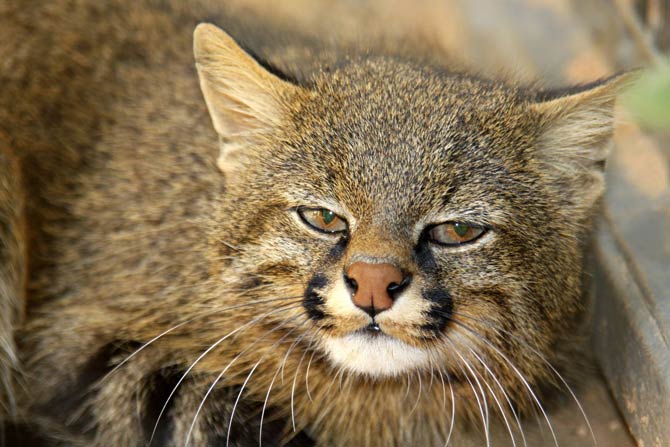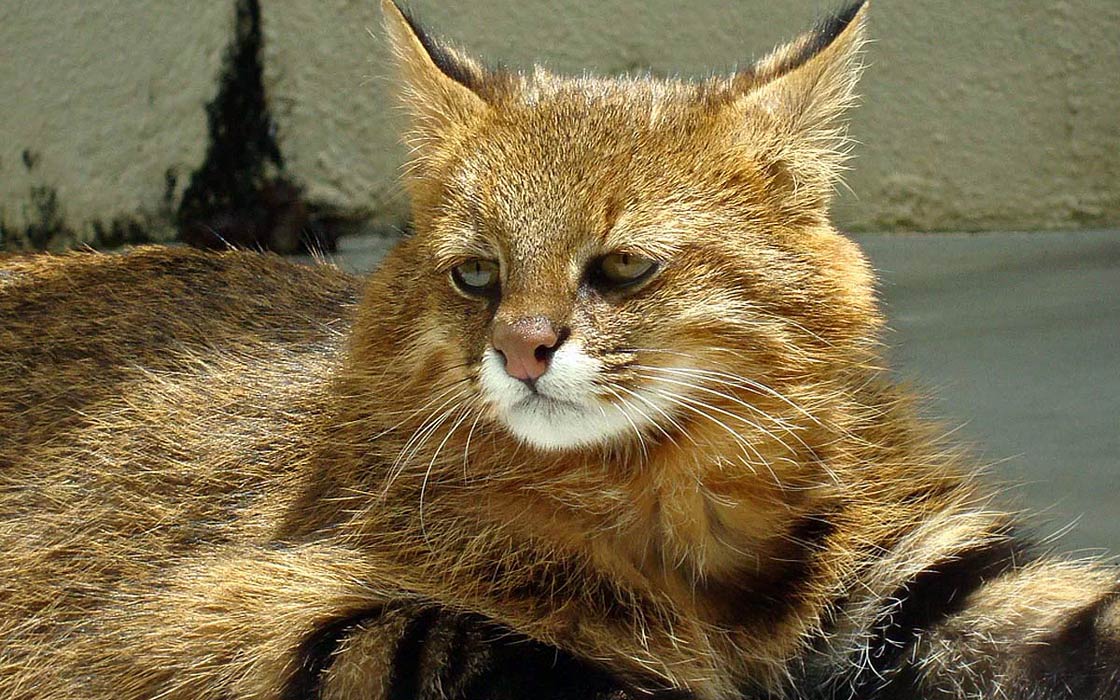Pampas cat (Leopardus colocola)
In different parts of the world, there are animals that are widely known, although few have seen them with their own eyes, and even fewer people can say something about them. This group includes the Pampas ocelot – a predator inhabiting South America.
The Pampas ocelot, called colocolo in some areas, is also known as the Pampas cat. Indeed, in appearance it is far from exotic animals – in appearance it looks more like domestic cats. This predator inhabits a very large area – thanks to this it probably has not become extinct yet. For many years it was a victim of fierce hunting – which makes it difficult to meet it now. Unfortunately, it happened before it was possible to get to know its habits well.
Classification
- Kingdom: Animalia
- Phylum: Chordata
- Class: Mammalia
- Order: Carnivora
- Suborder: Feliformia
- Family: Felidae
- Subfamily: Felinae
- Genus: Leopardus
- Species: Leopardus colocola
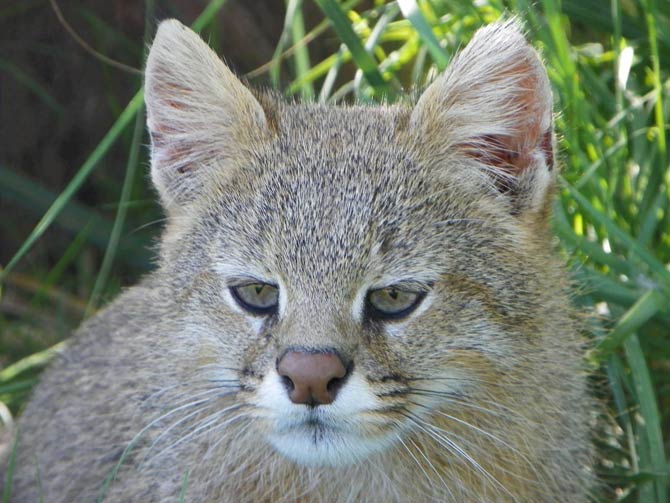
Problems with taxonomy
The Pampas cat was described as Felis colocola in 1782. However, careful examination of the appearance of these animals in different places revealed quite significant differences, including in the structure of the skull. As a result, it was considered that the mentioned name defines as many as three species of animals with 11 subspecies. However, in 2017, scientists concluded on the basis of genetic studies that it is, however, one species in which there are simply significant differences in appearance and body structure. There are, however, 7 of its subspecies.
Subspecies
- Leopardus colocola braccatus
- Leopardus colocola budini
- Leopardus colocola colocola
- Leopardus colocola garleppi
- Leopardus colocola munoai
- Leopardus colocola pajeros
- Leopardus colocola wolffsohni
Occurrence
The pampas cat has a very wide distribution range, although it is not numerous anywhere. It is found in Chile, Argentina and Uruguay, in Gran Chaco and Cerrado in Bolivia, Paraguay and Brazil, as well as in the northern Andes. In the north, the range of this ocelot ends in Ecuador, although traces of single individuals have also been found in Colombia.
This cat lives in areas covered with grass and shrubs, as well as rare, dry forests. It is also found in the mountains, at an altitude of up to 5,000 m (16 400 ft) above sea level, although most subspecies prefer heights not exceeding approx. 1,200 m (3,940 ft).
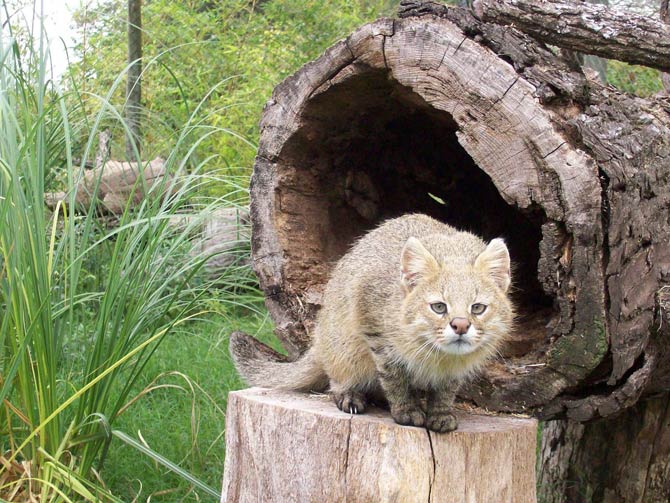
Characteristic
Appearance
The Pampas cat differs from other so-called New World cats. It has a slightly flattened face and triangular, pointed ears, the whole body is quite stocky, so this predator resembles a European wildcat, although it is slightly smaller than wildcat. It also differs from it in a more fluffy tail. At the neck and back, the hair is longer and forms a mane.
The coloration of the Pampas cat is very diverse and depends on the area of occurrence and subspecies. In Chile, reddish or dark gray ocelots with darker fine spots are found. Red-brown animals with large spots live in Ecuador, Bolivia and Peru. In contrast, in Brazil, eastern Bolivia and Argentina, these cats are brown or fawn with small but distinct spots.
All varieties have common features: the fur is lighter on the abdomen and feet, and there are distinct stripes on the tail. The differences in coloration are related to the diversity of environments and climate in the range of this animal.
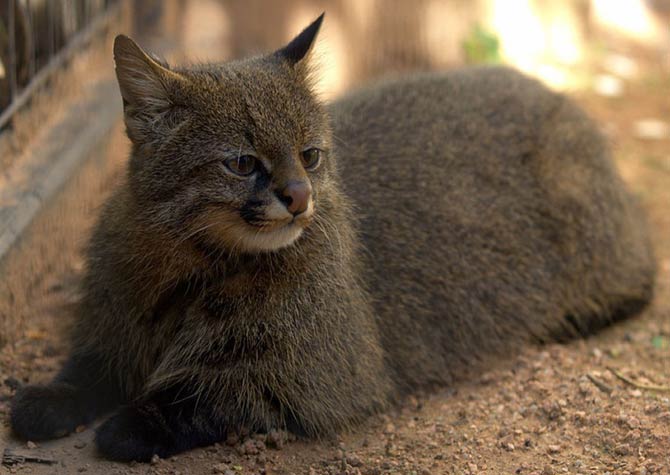
Lifestyle
Although known for hundreds of years, the Pampas cat is very little known. It feeds mainly on small rodents, mainly viscachas and guinea pigs and birds called Tinamous. It has been observed that it hunts on the ground, but likes to rest high, e.g. on tree branches. However, it is not known exactly whether it leads a night or day lifestyle; no research has been carried out on the social life of this predator.
The reproductive biology of the Pampas cat has been better known, mainly on the basis of observations of animals kept in captivity. The mating season begins in April and lasts until July. After 80-85 days of pregnancy, the female gives birth to 1-2, less often 3 young, weighing approx. 130 g (4.6 oz).
In captivity, they reach sexual maturity after 21 months and live to 16 years of age. However, no more than 9-year-old animals were found in the wild; it is possible, therefore, that in the wild they mature faster, but also live shorter.

Pampas cat and people
As is usually the case, the greatest threat to the Pampas cat is humans. For many years, this cat was a victim of fierce hunting because of its soft and warm fur – there were years when tens of thousands of skins left South America every year. Fortunately, the Pampas cat skin trade was banned in 1987.
The species continues to be under threat, mainly due to the destruction of habitats and settlements. It often lives in areas perfectly suitable for crops or pastures. Therefore, the Pampas cat according to the IUCN classification belongs to the NT category (Near Threatened).
However, it should be noted here that different subspecies are threatened to a different extent, and in different countries of America the methods of its protection achieve different effectiveness. These activities are all the more difficult because, for various reasons, the Pampas cat has not been the subject of thorough research and little is known about its life.
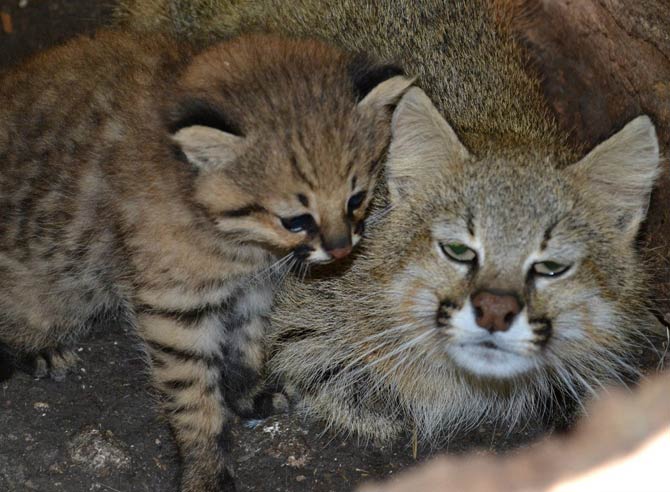
Detailed data / dimensions
Pampas cat, Pampas Ocelot, colocolo (Leopardus colocola)
- Body weight: 2.7-6.8 kg (6 – 15 lb), most often 3–4 kg (6.6 – 8.8 lb)
- Body length: 46 – 75 cm (18 – 30 in)
- The length of the tail: 23 – 29 cm (9.1 – 11.4 in)
Pampas cat – interesting facts
- Several types of coloration are distinguished in the Pampas cat. Each type is only observed in animals living in a certain area and within a certain range of altitude. It occurs in all subspecies in a given area.
- In 2016, Pampas cats were first observed in the semi-deserts of Peru, and since then such sightings have become more frequent. This suggests that the cat may gradually adapt to its new environment. This would greatly increase the chances of the species surviving.
